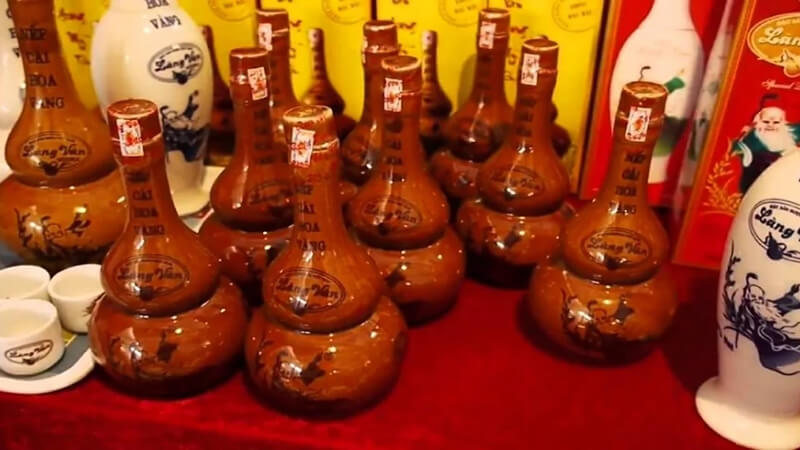Van village wine is the oldest and most famous wine in Northern Vietnam. The wine is special in the combination of 30 to 50 top-quality Chinese herbs that only the original Van village people know the secret to being handed down.

Van village wine is cooked completely by hand and has to go through a very elaborate process to ensure the most quintessential wine drops. The wine is characterized by its crystal clear color, mellow aroma and taste.
Reference price: 140,000 – 150,000 VND / 1 bottle of 300 ml.
Reference address:
Do Market – Nguyen Cao Street, Ninh Xa Ward, Bac Ninh Province
Source: Collected internet.
The North and North Central regions have a humid subtropical climate with 4 seasons: Spring, Summer, Autumn, and Winter. The Central and South Central regions have a tropical monsoon climate, the extreme South Central and Southern regions have tropical savanna characteristics. At the same time, it is directly influenced by the trade monsoon climate, which often blows in low latitudes. The South often has a tropical savanna climate, hot and humid with two seasons: dry season and rainy season (from April-May to October-November). Every year, the cold and humid winter typical of the North contrasts with the warm atmosphere of Tet and spring in the South.
Eight UNESCO world heritage sites stretch across Vietnam. Each place offers interesting perspectives on local life and majestic natural beauty. The Imperial Citadel and Hue mausoleums take you back to the Nguyen Dynasty full of ups and downs. Hoi An ancient town was once a bustling meeting point for ships and traders around the world. Throughout other provinces and cities, you will encounter ancient relics, poetic scenes, and vivid pieces that create the picture of Vietnamese heritage.
Officially Vietnamese (the language of the Vietnamese (Kinh) people). This is the mother tongue of about 85% of the Vietnamese population, along with nearly three million overseas Vietnamese, most of whom are Vietnamese Americans. Vietnamese is also the second language of ethnic minorities in Vietnam. Although Vietnamese has vocabulary borrowed from Chinese and previously used Chinese characters (Confucian script) to write, then converted to Nom script, today Vietnamese uses the Latin alphabet, called Quoc Ngu. , with diacritics to write...
Hang Market (Hai Phong) was formerly the market of an ancient village called Du Hang (17th-18th centuries). The Du Hang village area was formerly agricultural land and a traffic hub, so Hang market became a place to meet, exchange, and buy and sell plants, animals, and farming utensils. The urbanization process spread to the suburbs, so today Hang Market is located entirely in the inner city, in Du Hang Kenh ward, Le Chan district, Hai Phong city. Even though many years have passed, the customs of exchanging agricultural goods of c